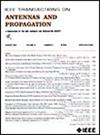Fully Stable Formulations of the Spherically Layered Media Theory Using Scaled Bessel Functions
IF 5.8
1区 计算机科学
Q1 ENGINEERING, ELECTRICAL & ELECTRONIC
引用次数: 0
Abstract
The spherically layered media (SLM) theory has wide applications for electromagnetic wave scattering analysis. Due to the involved Bessel functions, the traditional formulations of the SLM theory suffer from numerical overflow or underflow when the Bessel function’s order is large, the argument is small, or the argument has a large imaginary part. Recently, by arranging the Bessel functions in ratio forms and computing these ratios with recursive formulas, these numerical issues have been solved. However, the iteration direction of some ratios is backward, i.e., from large order to small order, which is inconvenient in coding. Another method proposed recently for the numerical issues with SLM theory is to use the small-argument asymptotic formulas of Bessel functions and cancel out the divergent factors. This method can be carried out simply in forward manner, but it only solves the first two issues mentioned above while the third issue remains unsolved for this method. In this article, the Bessel functions in the traditional formulation of the theory are replaced by the scaled Bessel functions which have good numerical properties for high-loss media. As a result, the numerical breakdown issue of the SLM theory in high-loss case can be solved. Then, asymptotic formulas for the scaled Bessel functions are derived and applied to the theory to solve the numerical breakdown problem when the arguments of the scaled Bessel functions are small or the functions’ order is large. By this way, fully numerically stable formulations of the SLM theory are obtained, and the series summation is performed directly without any backward iterations. Numerical tests show that the proposed approach can work properly when the media are very high lossy, the arguments are very small, or the scaled Bessel functions’ order is very large.利用标度贝塞尔函数的球层介质理论的完全稳定公式
球层介质理论在电磁波散射分析中有着广泛的应用。由于涉及到贝塞尔函数,当贝塞尔函数的阶数较大、辐数较小或辐数虚部较大时,传统的SLM理论公式会出现数值溢出或下溢。近年来,通过将贝塞尔函数排列成比率形式,并用递归公式计算这些比率,这些数值问题已经得到了解决。但是,有些比率的迭代方向是反向的,即从大阶到小阶,这给编码带来了不便。最近提出的另一种用SLM理论解决数值问题的方法是利用贝塞尔函数的小参数渐近公式并消去发散因子。这种方法可以简单地向前推进,但它只解决了前面提到的前两个问题,而第三个问题仍然没有解决。本文将传统理论公式中的贝塞尔函数替换为对高损耗介质具有良好数值性质的标度贝塞尔函数。从而解决了高损耗情况下SLM理论的数值击穿问题。然后,导出了缩放贝塞尔函数的渐近公式,并将其应用于解决缩放贝塞尔函数参数较小或函数阶数较大时的数值击穿问题。通过这种方法,得到了SLM理论的完全数值稳定表达式,并直接进行了级数求和,无需进行反向迭代。数值实验表明,该方法在介质损耗较大、参数很小或贝塞尔函数阶数较大的情况下均能正常工作。
本文章由计算机程序翻译,如有差异,请以英文原文为准。
求助全文
约1分钟内获得全文
求助全文
来源期刊
CiteScore
10.40
自引率
28.10%
发文量
968
审稿时长
4.7 months
期刊介绍:
IEEE Transactions on Antennas and Propagation includes theoretical and experimental advances in antennas, including design and development, and in the propagation of electromagnetic waves, including scattering, diffraction, and interaction with continuous media; and applications pertaining to antennas and propagation, such as remote sensing, applied optics, and millimeter and submillimeter wave techniques

 求助内容:
求助内容: 应助结果提醒方式:
应助结果提醒方式:


